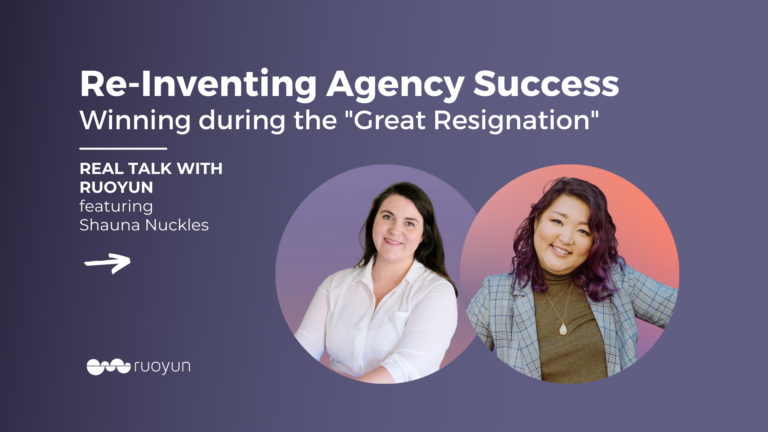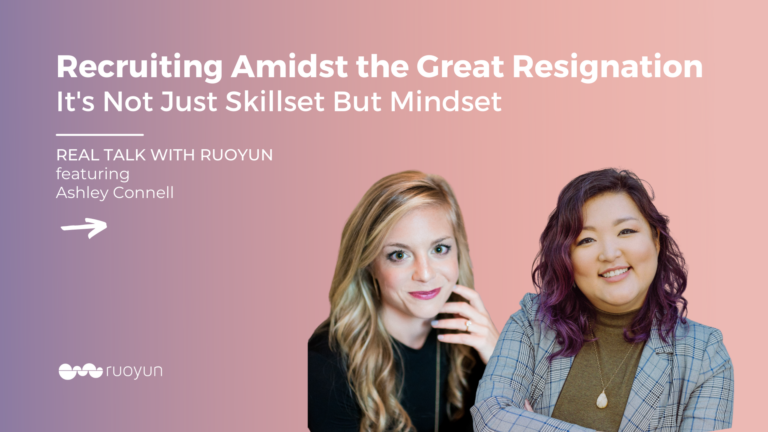Great Resignation or Great Re-Prioritization?
4.4 million people, about 3% of the US workforce, left their jobs during September 2021
US Department of Labor
Deemed the “Great Resignation”, many businesses are experiencing an increase in turnover as employees and potentially whole departments leave for greener pastures and affecting the bottom line. It’s not just the younger generation, who are known to be job hop, but senior and upper management who are leaving their jobs. To put in perspective, the cost of turnover can be 1.5-2 times the employee’s salary so the more senior the individual, the higher the cost their departure has on the company.
While the headlines can create panic, if you ask many culture/HR professionals, their reaction is “This was bound to happen.” For it’s not the “Great Resignation” but the “Great Re-Prioritization”. The pandemic triggered a self-reflection exercise that allowed many people to refocus on what truly matters to them. Should they continue to work for a company where they’re not happy or to move on to another company where they can feel valued? Or should they consider starting a company of their own?
The statistics reported in The Wall Street Journal, citing the U.S. government and other sources prove that self-employment is on the rise:
- Labor Department data shows that there are now 500,000 more unincorporated, self-employed workers than there were at the start of the pandemic: 9.44 million total.
- The number of new applications for federal tax ID numbers jumped 56 percent between 2019 and 2021; two-thirds of those were for businesses expected to employ nobody other than the founder.
- In September 2019, the online marketplace Etsy had 2.6 million active sellers; as of the same time this year, the number was 7.5 million.
While there is an increase in entrepreneurship, there is still a majority of people who have left because they have felt like they were either undervalued or limited in their current position. What causes a person to feel undervalued and unhappy can vary. Many assume it’s because of lack of pay or remote work but it’s more than just the transactional experience. It’s whether or not the individual feels like they’re set up to contribute and make an impact with their current company.
LinkedIn CEO Ryan Roslansky explained to Time recently how his company is seeing these shifts play out on its platform that he terms as an “unprecedented talent reshuffle happening globally”. Roslansky explains that employees “are rethinking not just how they work, but why they work and what they most want to do with their careers and lives.”
Microsoft CEO – CEO, Satya Nadella, agrees with Roslansky — he recently told Harvard Business Review that he too prefers the term “Great Reshuffle.”
“Not only are people talking about when, where, and how they work, but also why they work. They really want to recontract, in some sense, the real meaning of work and sort of asking themselves the question of which company they want to work for and what job function or profession they want to pursue,” he remarked.
This means more than ever, people are asking if they want to continue pursuing their current career path or evolve into something new. They recognize that what they “should” do may not be what they “want” to do.
But it’s not about reshuffling to a new position, that is just the final act. The true exercise is it’s about re-prioritizing what’s important for:
- The impact they can make in their career
- Their livelihood
- The culture of the company that they want to be a part of
Yes, re-assessing culture is a part of the Great Re-prioritization
As more people are simultaneously building their mental health and personal growth, a new phrase has been rising to the top that changes how we perceive the environment and culture that we work in. Emotional Intelligence.
“Emotional intelligence is the practiced awareness of how emotions affect your communications and efforts, coupled with strategies that you develop to leverage your emotions and other people’s emotions to help you achieve goals.”
Bill Murphy
In a healthy work culture, emotionally intelligent leaders can cultivate an environment where their team can learn these “soft skills” and collaborate more effectively. However, in an unhealthy environment, the friction caused by a lack of communication can create large gaps that can eventually implode a company.
Now you may be wondering, this isn’t new. You’re right it’s not but why is it a problem now?
The pandemic uncovered that through remote work, people are able to more producitve away from the office because they’re kept away from potential unproductive toxic culture. In this space away from constant distractions, individuals have recognized that there are other options available out there. Combined with their reassessment of what matters has led to many individuals realizing that it may be a time to make a shift.
So what can you, Business Leader, do?
It boils down to how healthy your culture is.
- Do you cultivate a good culture that is naturally drawing the best talent towards you? If so, in this great shift, you are set up to receive some of the best talents that you may not have otherwise been able to bring to the team. For people are recognizing that it’s not about the big compensation package but if they can make a difference and are willing to go for a smaller growing company to be a part of something bigger.
- Or are you stuck in a hostile or toxic culture where you’re losing key strong players because they didn’t have an environment to thrive and grow with the company? If so, then it’s time to reassess what’s causing the toxic culture and treat the wound before the whole company turns septic.
The answer isn’t black and white but a range that you can land in. Many companies can set out with a good intention but it’s about the actions or lack of actions taken by leaders that define the culture.
I like to say friction in communication disputes is like small cuts. On each individual transgression, it’s fine. However, it’s when we don’t have a proper process of healing a small wound and continue to create small cuts that end up in a septic wound or the toxic culture that is created.
A lot of the friction can occur when we want to meet demand but fail to put in the correct boundaries to avoid burnout in our team. As business owners, we are passionate about changing our world for the better. A part of that change is creating a healthy environment where our team can grow and build their livelihoods without burning out.
The Key Question: “Are we cultivating the correct environment for those around us and our community to thrive?”
It can be a large question to unpack but you don’t have to shoot in the dark.
Kimberly of Kimberly and Coach, a Team Dynamics Coaching duo, explains, “Your people will tell you how they want to be led instead of you expecting them to fit into a certain way. “
Microsoft CEO – CEO, Satya Nadella offers a thought experiment to help leaders assess if their company is creating a space that offers meaning for their team members: “I always say, if everybody at Microsoft who works at Microsoft reframed it and said, ‘I don’t work for Microsoft. Microsoft Works for me,’ just for a moment, just as a thought experiment, does that equation compose? Am I able to fulfill my career aspirations, my approach to having an impact in the world? Somehow if Microsoft is acting as a platform for that, then it’s very different. I feel connected with the mission.”
Each of us wants to contribute to something larger than ourselves. As companies, we are creating an offer that not only our consumers can use to better their lives but for our employees as well. We are creating a space through which our employees can grow themselves and their livelihood and in turn, our company and our community will improve along the way.
No matter if it’s the Great Resignation, Reshuffle, or Re-prioritization, change is happening as people are defining what they truly care about. As business owners, we have ridden many waves and to stay afloat and it’s all about realigning to our values and our why.
Stay tuned for the next blog about how to take actionable steps towards reinforcing the good intentions you have set out in your business.
Photo by Ono Kosuki from Pexels






